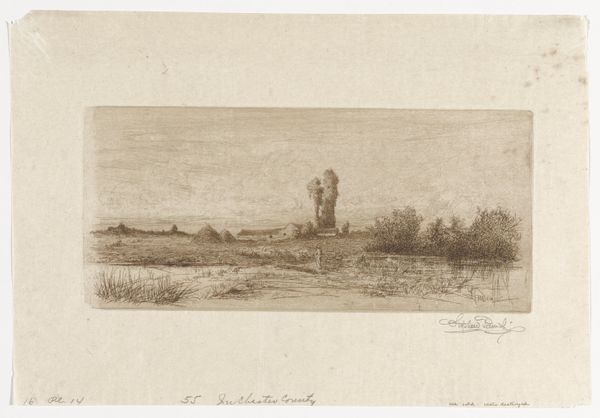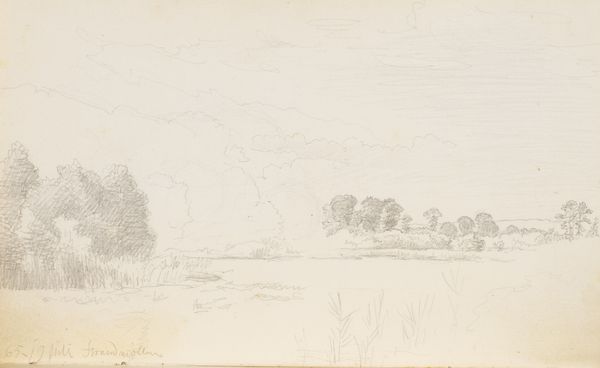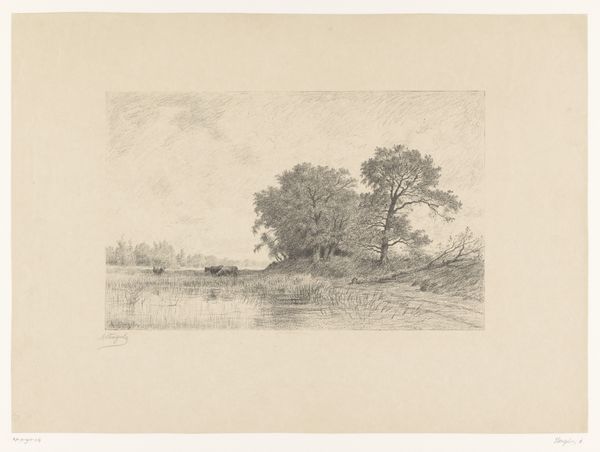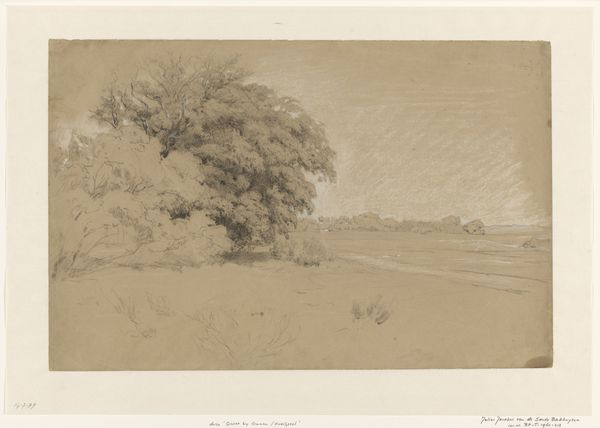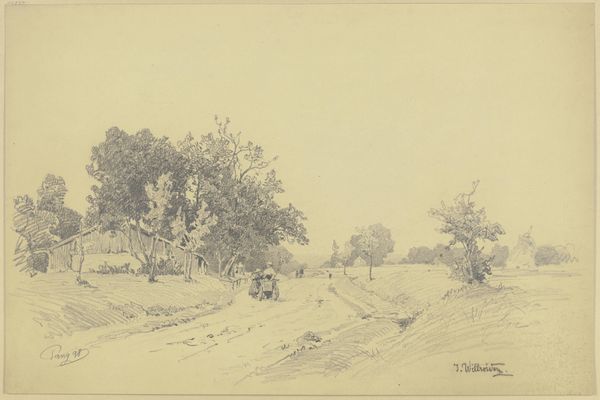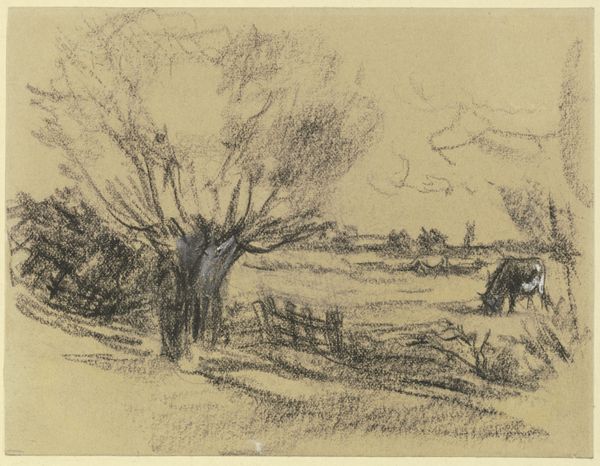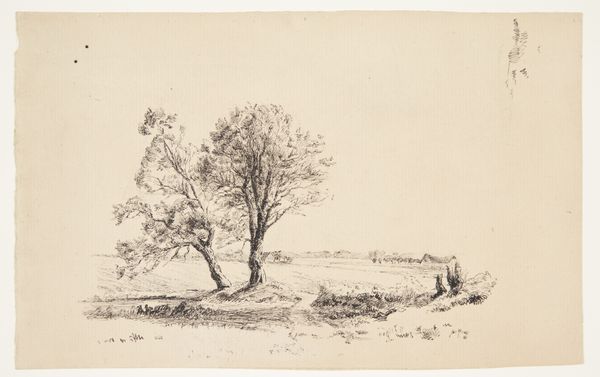
Het Schenkwegje bij Den Haag, te zien naar de stad Possibly 1887 - 1888
0:00
0:00
theophiledebock
Rijksmuseum
drawing, pencil
#
pencil drawn
#
drawing
#
light pencil work
#
impressionism
#
pencil sketch
#
landscape
#
etching
#
personal sketchbook
#
pencil
#
sketchbook drawing
#
pencil work
#
realism
Dimensions: height 280 mm, width 403 mm
Copyright: Rijks Museum: Open Domain
Théophile de Bock captured this landscape near The Hague in a drawing. The road, or "Schenkwegje", is a dominant symbol, a path between the natural world and the distant city. Roads have long been potent symbols in art and mythology, evoking journeys, transitions, and the passage of time, reappearing in various forms across cultures. Think of the Roman roads, symbols of power and connection, or the Silk Road, a conduit for cultural exchange. Even in Van Gogh's works, roads often embody a sense of melancholy or longing. Here, the path invites us on a contemplative journey. The church spire, barely visible, can be a beacon, yet it is distant, almost overshadowed by the natural elements. There is a psychoanalytic weight to this—the subconscious pull between nature and civilization, freedom and structure. Such imagery taps into our deepest anxieties and desires. The symbol of the road is not linear, but cyclical. It resurfaces, evolves, and takes on new meanings in different historical contexts, ever engaging us in a dialogue between our past and present selves.
Comments
No comments
Be the first to comment and join the conversation on the ultimate creative platform.




